
Eucalypts
Complete Set of 5 nos of definitive postage stamps on the Eucalyptus (gum tree) in Australia :
 Issued by Australia
Issued by Australia
Issued on Nov 17, 1982
Designer : Betty Conabere, Mansfield [Mrs. Elizabeth Conabere was a botanical illustrator who lived and worked in an elderly house surrounded by a garden, in the Victorian country town of Mansfield. In 1969, on completing drawings of alpine plants for the National Herbarium in Melbourne, she commenced work on the two-volume limited edition book ‘Wildflowers of south eastern Australia‘ published in 1974. The original paintings for this work were purchased by the Victorian Ministry for the Arts, and presented to the La Trobe Library. Mrs. Conabere had also worked on Illustrations for the Victorian Lands Department depleting plants which have been declared noxious weeds. Her 1982 stamp commissions for Australia Post included both ‘Roses in Australia‘ and ‘Eucalypts’.]
Typographer : Australia Post Graphic Design Section
Type : Se-tenant Stamps, Mint Condition
Colour : Multi colour
Denominations : 2 x 1 c, 2 x 2 c, 2 x 27 c (60 cents) and 2 x 1 c, 2 x 2 c, 1 x 3 c, 1 x 10 c, 3 x 27 c ($1)
Stamp size : 22.1 mm x 25.3 mm
Perforation : 13½ x 14½
Paper : 96 GSM Harrisons unwatermarked gravure stamp paper incorporating luminescence
Sheet content : $1.00 folder 9 stamps; 60c folder 6 stamps
Printing process : multicolour photogravure
Printer : Joh Enscheďe en Zonen, Haarlem, Holland
About :
- Stamp vending machines were in use in all Australian States by late 1938, following assorted experiments with small numbers of machines dating back to 1903. Stamps sold in the vending machines were manufactured in coils. Stamp booklets have been issued periodically since the first decade of the twentieth century. In 1982, new vending machines were installed nationally, and definitive stamps depicting the flowers of five eucalypts were issued in stamp folders for sale only in the new machines.
- The 60c folder contains illustrations of Eucalyptus forrestiana, Eucalyptus caesia and Eucalyptus calophylla ‘Rosea’; and the $1 folder adds Eucalyptus ficifolia and Eucalyptus globulus (which is also represented on the cover of the folders). The first day cover, above, features Eucalyptus torquata. The Eucalypt issue continues the policy of depicting flora and fauna on definitive Australian stamps. The species illustrated were selected with the assistance of the Botany Department at Monash University. The only eucalypt flower previously represented on an Australian stamp is Eucalyptus globulus, included in the Native Flowers definitive series introduced in 1968.
- Eucalypts are native to the continent of Australia only, except for a few species in Timor and New Guinea. The most dominant Australian genus of plants, some 600 species of eucalypts grow over a wide range of climatic conditions ranging from mild coastal zones through to the extremes of hot, arid areas inland and the cold alpine treeline.
- The word ‘eucalypt’ is derived from the Greek ‘eu’ meaning well, and ‘kalyptos’ meaning covered; referring to the tight covering of the flower bud by a cap, or operculum, which is cast off when the stamens open to form the flower. When the stamens fall off, the seed receptacle continues to grow, changing in the process to a brownish grey, woody ‘gum nut’. The popular term ‘gum tree‘ is inaccurate, and is properly applied to only one group of smooth-barked eucalypts, of which Eucalyptus globulus is an example. The nomenclature is further confused by the use of popular, local names applied with little regard for scientific designation. Some species have been given more than one common name; and some common names, such as ‘blue gum’, have been given to several different species.
- The common name of Eucalyptus caesia is Gungurru. Caesia is Latin for silvery grey. Eucalyptus caesia is generally regarded as one of the most beautiful flowering eucalypts, with delicate rose pink and sometimes silver pink clusters of flowers tipped with gold anthers. The flowers bloom over a long period, and are followed by equally lovely; silvery dangling seed capsules. A small, ornamental species usually attaining a height of 4-6 metres, the straggly tree has smooth, deciduous bark and white timber. Eucalyptus caesia is considered an endangered species in its native habitat in Western Australia.
- Eucalyptus calophylla ‘Rosea’, the pink flowered Marri, is a cultivated variety of uncertain genealogy. Eucalyptus calophylla is a white flowered species native to Western Australia, occasionally occurring there in a pink form which is known horticulturally as Eucalyptus calophylla var ‘Rosea’. The many specimens in the eastern States of Australia may have sprung from a single Eucalyptus calophylla tree growing at the Melbourne Botanic Gardens, which in 1893 produced pink flowers (unlike the white flowers of the Eucalyptus calophylla species) [Ernest E. Lord. Shrubs and trees for Australian gardens, 5th edn revised by J. H. Willis, Melbourne, Lothian, 1982. p. 25]. The Melbourne Botanic Gardens hybrid is properly designated Eucalyptus calophylla x Eucalyptus ficifolia, but has also been described in the literature as Eucalyptus ficifolia var guilfoylei. The pink flowered Marri in horticulture derives from both the Western Australian Eucalyptus calophylla var ‘Rosea’ and the eastern hybrid form. The tree grows to a height of 4-7 metres, with close, subscaly bark.
- Closely related to the Eucalyptus calophylla, Eucalyptus ficifolia is the best known flowering eucalypt, and is widely cultivated both in Australia and in other countries. Known as the red or scarlet flowering gum, the brilliant colours of the immense clusters of flowers range from crimson, scarlet, pink and orange to white. The leaf stalks are crimson, contrasting with the deep green leaves. Of medium height, generally around 9 metres, the tree forms wide-spreading, shady branches with rough bark surrounding a thick trunk. The seeds are winged, enabling dispersal by strong winds. Eucalyptus ficifolia is a coastal species, native to the south west of Western Australia, and, like Eucalyptus caesia, is an endangered species in the wild.
- The common name of the Eucalyptus forrestiana is Forrest’s Marlock, named for Sir John Forrest, the former Premier of Western Australia. Eucalyptus forrestiana is also known as the fuchsia mallee, because of the fuchsia-like four-winged red pods which are such a distinctive feature of this attractive small tree. The long, peaked cap of the drooping red buds lift to reveal the short, bushy yellow flowers. The tree grows to a height of some 3 metres, and is native to Western Australia.
- Known also as the southern blue gum or blue gum, Eucalyptus globulus, the Tasmanian blue gum, is one of the fastest growing trees in the world, and has been planted extensively overseas. Globulus is Latin for button-like, referring to the top of the whitish-green seed vessel. The white flowers bloom for a comparatively long period. The roundish, bluish-white leaves of the young tree contrast with the dark green, curved adult leaves, and the smooth, bluish-white bark hangs in ribbons when shed. The tree commonly attains a height of 45 metres, flourishing especially in a cool climate in coastal or hilly areas.


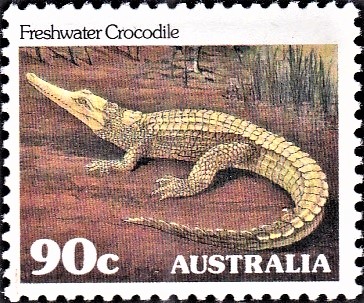
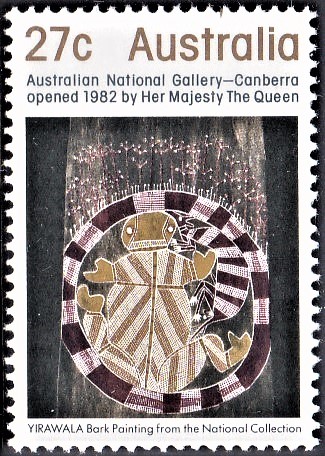
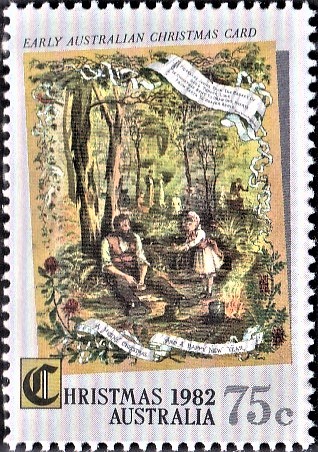
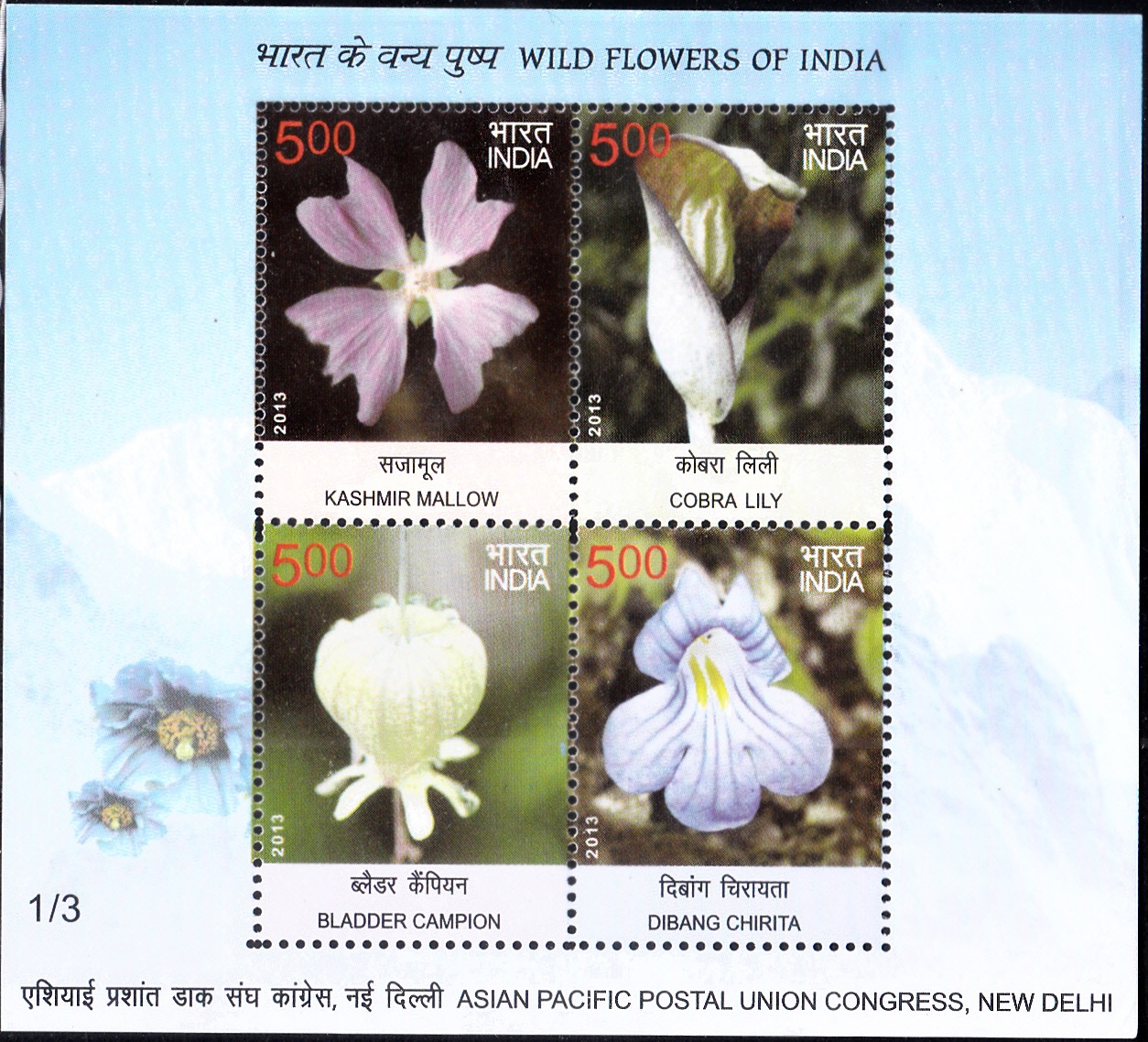
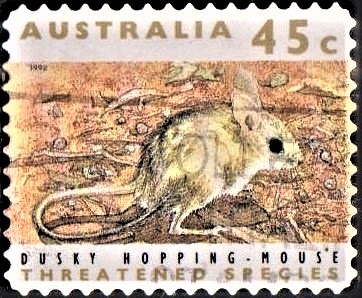

[…] the ‘Australian National Gallery – Canberra’ stamp, the typography of the ‘Eucalypts‘ stamps, and first day covers including ‘National Stamp Week 1982‘, […]
[…] printed by Harrison & Sons Ltd of London; the last to be printed abroad until the 1982 ‘Eucalypts‘ […]
[…] Designer : Betty Conabere [Mrs. Elizabeth Conabere was a botanical illustrator who lived and worked in an elderly house surrounded by a garden, in the Victorian country town of Mansfield. In 1969, on completing drawings of alpine plants for the National Herbarium in Melbourne, she commenced work on the two-volume limited edition book ‘Wildflowers of south eastern Australia‘ published in 1974. The original paintings for this work were purchased by the Victorian Ministry for the Arts, and presented to the La Trobe Library. Mrs. Conabere had also worked on Illustrations for the Victorian Lands Department depleting plants which have been declared noxious weeds. Her 1982 stamp commissions for Australia Post included both ‘Roses in Australia’ and ‘Eucalypts‘.] […]